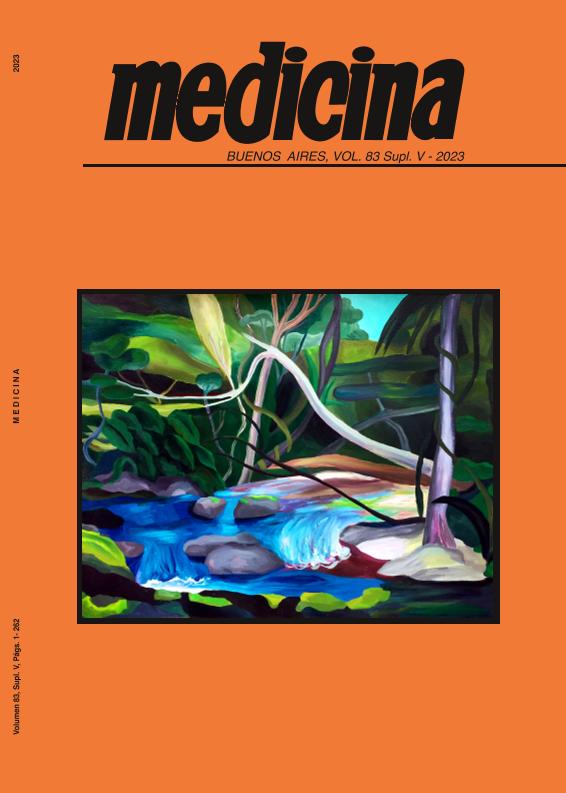Evento
C. Elegans as a screening plataform for drug discovery
Hernando, Guillermina Silvana ; Turani, Ornella
; Turani, Ornella ; Rodriguez Araujo, Noelia
; Rodriguez Araujo, Noelia ; Bouzat, Cecilia Beatriz
; Bouzat, Cecilia Beatriz
 ; Turani, Ornella
; Turani, Ornella ; Rodriguez Araujo, Noelia
; Rodriguez Araujo, Noelia ; Bouzat, Cecilia Beatriz
; Bouzat, Cecilia Beatriz
Tipo del evento:
Reunión
Nombre del evento:
LXVIII Reunión Anual de la Sociedad Argentina de Investigación Clínica; XXV Jornadas Anuales de la Sociedad Argentina de Biología; LV Reunión Anual de la Asociación Argentina de Farmacología Experimental y VIII Reunión Científica Regional de la Asociación Argentina de Ciencia y Tecnología de Animales de Laboratorio
Fecha del evento:
15/11/2023
Institución Organizadora:
Sociedad Argentina de Investigación Clínica;
Sociedad Argentina de Biología;
Asociación Argentina de Farmacología Experimental;
Asociación Argentina de Ciencia y Tecnología de Animales de Laboratorio;
Título de la revista:
Medicina (Buenos Aires)
Editorial:
Fundación Revista Medicina
e-ISSN:
1669-9106
Idioma:
Inglés
Clasificación temática:
Resumen
The free-living nematode Caenorhabditis elegans is a widely utilized model organism in various fields of mod- ern biology. Its advantages, such as its easy manipulabil- ity, low maintenance cost, short reproductive cycle of ap- proximately three days, large brood size of 300 progenies per hermaphrodite worm, and transparent body, make it the ideal choice for drug discovery screenings. Notably, C. elegans possesses the largest known Cys-loop recep- tor family, along with unique receptors absent in verte- brates, which present attractive targets for anthelmintic drugs. Additionally, this nematode has shown promise in the search for new therapeutic compounds, including Essential Oils (EOs). EOs have found extensive appli- cations in human and veterinary health, with their active agents being isolated and incorporated into numerous pharmaceutical preparations. Our hypothesis states that EOs derived from aromatic plants commonly used in aro- matherapy or as food additives contain compounds with anthelmintic activity. To test this hypothesis, we utilize C. elegans as a model organism for parasitic nematodes. We have developed behavioral and molecular assays using both wild-type and mutant worms lacking Cys-loop receptors involved in locomotion. These assays aim to identify the primary compounds within EOs that mediate anthelmintic activities and their respective pharmacolog- ical targets. Furthermore, we explore the combination of current anthelmintics with active compounds from EOs as a strategy to mitigate drug resistance. Our objective is to provide a robust platform for the dis- covery of novel antiparasitic compounds. Through our research, we have identified six distinct EOs that inhibit C. elegans locomotion and egg hatching, each exhibiting varying levels of potency, thereby indicating their anthel- mintic capacity. Moreover, we have successfully identi- fied the key bioactive compounds and receptor targets associated with these EOs using single-channel and whole-cell recordings from cultured C. elegans muscle cells. These findings have allowed us to elucidate the molecular mechanisms behind the modulation of C. ele- gans nicotinic and GABA receptors by these compounds. In conclusion, our results highlight EOs as valuable sources of natural compounds with promising polyphar- macological profiles for anthelmintic therapies. We have deciphered the molecular basis of their actions and pro- vided insights into the efficacy of drug combinations as strategies to combat drug resistance in nematodes.
Palabras clave:
CAENORHABDITIS ELEGANS
,
ESSENTIAL OILS
,
CYS-LOOP RECEPTORS
,
DRUG DISCOVERY
Archivos asociados
Licencia
Identificadores
Colecciones
Eventos(INIBIBB)
Eventos de INST.DE INVEST.BIOQUIMICAS BAHIA BLANCA (I)
Eventos de INST.DE INVEST.BIOQUIMICAS BAHIA BLANCA (I)
Citación
C. Elegans as a screening plataform for drug discovery; LXVIII Reunión Anual de la Sociedad Argentina de Investigación Clínica; XXV Jornadas Anuales de la Sociedad Argentina de Biología; LV Reunión Anual de la Asociación Argentina de Farmacología Experimental y VIII Reunión Científica Regional de la Asociación Argentina de Ciencia y Tecnología de Animales de Laboratorio; Mar del Plata; Argentina; 2023; 55-55
Compartir



